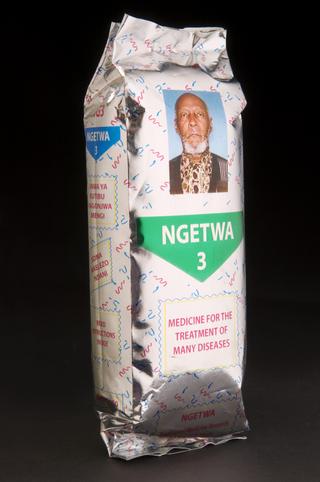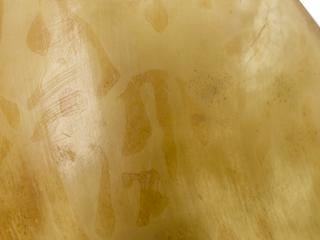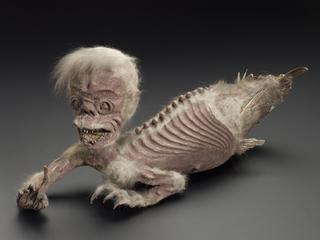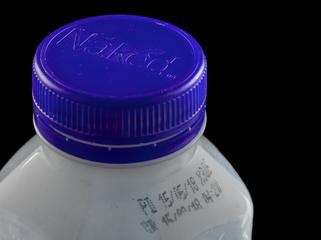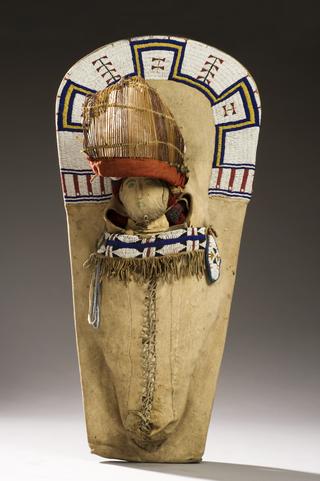Mummified body of a young man, Peruvian, 300-800
Mummified body of a young man, Peruvian, possibly Moche, likely northern central coast region, around 400
More
This preserved body of a young man is from the northern coast of Peru. His unusual hairstyle, worn in a tassel across the forehead, suggests he may have been a member of the Moche culture, which flourished from around 100 to 800 CE, although further research is needed to confirm his cultural and geographical origins. A bulge on his upper lip could indicate an abscess or perhaps a small bundle of coca leaves pushed into his cheek.
On burial, the body would have been seated in an upright position, with the knees at the face. It was often then wrapped in layers of fabric and sometimes a false head would be attached to the bundle. The body was then buried with personal possessions, ritual objects and food offerings, revealing a strong belief in a continuing existence after death.
This individual’s body was purchased on behalf of Henry Wellcome’s Historical Medical Museum from a London auction house in 1924, along with other Andean human remains. This was a time when human remains were often acquired for anthropological study, including to support the development of racist scientific theories.
